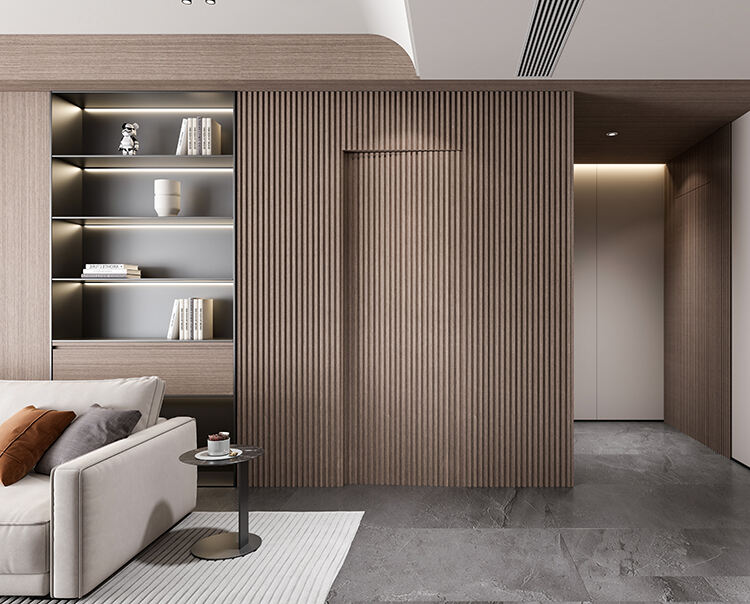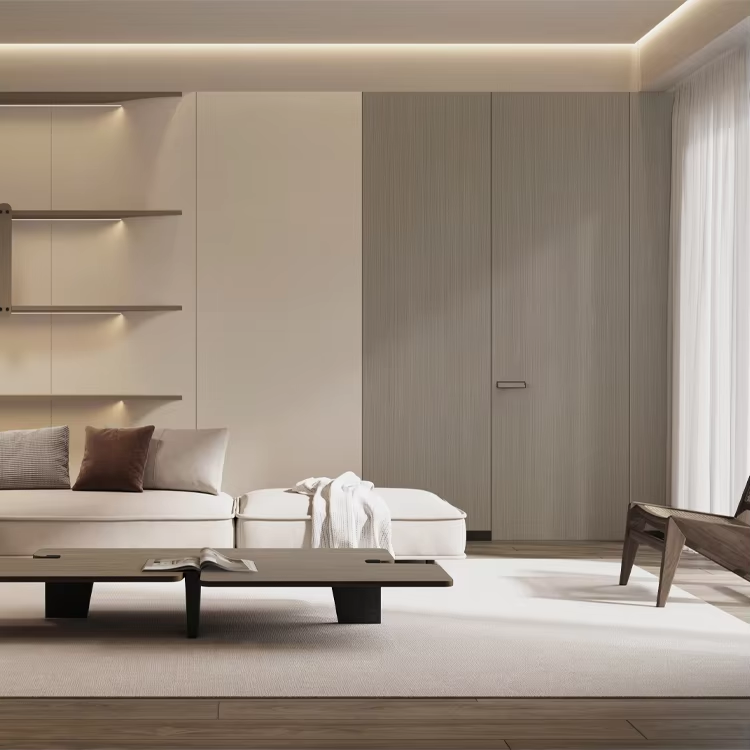Transform Your Living Space with an Elegant Wall Panel Installation
A sofa background wall panel can instantly elevate your living room's aesthetic appeal, creating a sophisticated focal point that draws attention and admiration. This decorative element has become increasingly popular among interior design enthusiasts and homeowners seeking to add character to their spaces. Whether you're aiming for a modern, minimalist look or a more traditional ambiance, installing a wall panel behind your sofa can dramatically transform the entire room's atmosphere.
Before diving into the installation process, it's important to understand that a well-executed sofa background wall panel project requires careful planning and attention to detail. The right panel selection, proper measurements, and professional installation techniques will ensure your feature wall stands out for all the right reasons.
Planning Your Wall Panel Project
Selecting the Perfect Panel Material
The material choice for your sofa background wall panel significantly impacts both aesthetics and durability. Popular options include wooden panels, PVC, MDF, fabric-covered panels, and natural stone veneers. Each material offers unique benefits and creates different visual effects. Wooden panels bring warmth and natural texture, while PVC panels offer water resistance and easy maintenance. Fabric-covered panels can add softness and sound absorption properties to your space.
Consider factors such as room humidity, exposure to sunlight, and overall interior design theme when selecting your panel material. For instance, if your living room receives abundant natural light, UV-resistant materials would be a wise choice to prevent fading and discoloration over time.
Measuring and Layout Planning
Accurate measurements are crucial for a successful sofa background wall panel installation. Begin by measuring the entire wall height and width, accounting for any obstacles such as electrical outlets or switches. Consider the sofa's height when determining the panel height – typically, the panel should extend at least 12-18 inches above the sofa back for optimal visual impact.
Create a detailed layout plan, marking panel placement and ensuring symmetrical arrangement. If using multiple panels, calculate the spacing between them to achieve a balanced look. Remember to factor in any pattern matching requirements for seamless visual flow.

Essential Tools and Materials
Gathering Your Installation Equipment
Professional installation requires the right tools. Essential items include a level, measuring tape, pencil, drill with appropriate bits, screwdriver, adhesive, screws, wall anchors, and a saw for any necessary cuts. If working with heavy panels, having a helper and proper lifting equipment is crucial for safety and precise installation.
Additional specialized tools may be needed depending on your chosen panel material and mounting system. For example, installing fabric panels might require a staple gun, while stone veneer panels could need specific masonry tools.
Choosing the Right Mounting System
The mounting system you select should match your sofa background wall panel type and wall construction. Direct adhesive mounting works well for lightweight panels, while heavier options may require a combination of adhesive and mechanical fastening. French cleats offer excellent support for weighty panels while maintaining a clean look.
Consider the wall's material and structure when selecting mounting hardware. Drywall requires wall anchors, while concrete or brick walls need masonry screws. Always ensure your chosen mounting system can adequately support the panel weight.
Installation Process
Surface Preparation
Proper wall preparation is essential for a lasting installation. Begin by cleaning the wall surface thoroughly, removing any dust, grease, or old wallpaper. Repair any holes or cracks, and ensure the wall is completely dry. For textured walls, consider sanding or applying a leveling compound to create a smooth surface for better panel adhesion.
If painting is part of your project, complete this step before panel installation and allow adequate drying time. Remove or work around any baseboards or crown molding as needed for your specific design plan.
Panel Installation Steps
Start the installation process by marking level lines on the wall using a laser level or traditional level tool. Begin installation from the center or a predetermined starting point, working outward to ensure symmetrical placement. Apply adhesive according to manufacturer specifications, and secure panels using your chosen mounting system.
For multi-panel installations, maintain consistent spacing and alignment throughout the process. Use spacers if necessary to ensure uniform gaps between panels. Check level and plumb frequently during installation to prevent any misalignment that could become more noticeable as you progress.
Finishing Touches
Panel Edge Treatment
Pay special attention to panel edges for a polished look. Install trim pieces or molding to cover exposed edges and create clean transitions. For corners and joints, use appropriate finishing materials that complement your sofa background wall panel design while ensuring a professional appearance.
Consider adding LED strip lighting behind or between panels for dramatic effect. This lighting can enhance the panel's texture and create ambient illumination that transforms the room's atmosphere during evening hours.
Maintenance and Care
Establish a proper maintenance routine based on your panel material. Regular dusting and periodic cleaning with appropriate products will help maintain the panel's appearance. Avoid harsh chemicals that could damage the surface finish, and address any damage promptly to prevent further deterioration.
Keep a record of the panel material and installation details for future reference. This information can be valuable for maintenance purposes or if you need to replace or repair any sections in the future.
Frequently Asked Questions
How long does it take to install a sofa background wall panel?
Installation time varies depending on the panel size, complexity, and material. A basic installation typically takes 4-8 hours for a single wall, while more complex designs with multiple panels or special features may require 1-2 days for complete installation.
Can I install wall panels over existing wallpaper?
While it's possible to install panels over wallpaper, it's not recommended. Remove existing wallpaper to ensure proper adhesion and prevent future issues with moisture or uneven surfaces that could compromise the installation.
What is the average cost of installing a sofa background wall panel?
Costs vary significantly based on material choice, size, and complexity. Basic panel systems might start at $200-500 for materials, while premium materials and professional installation can range from $1,000 to $5,000 or more for larger, more elaborate designs.

